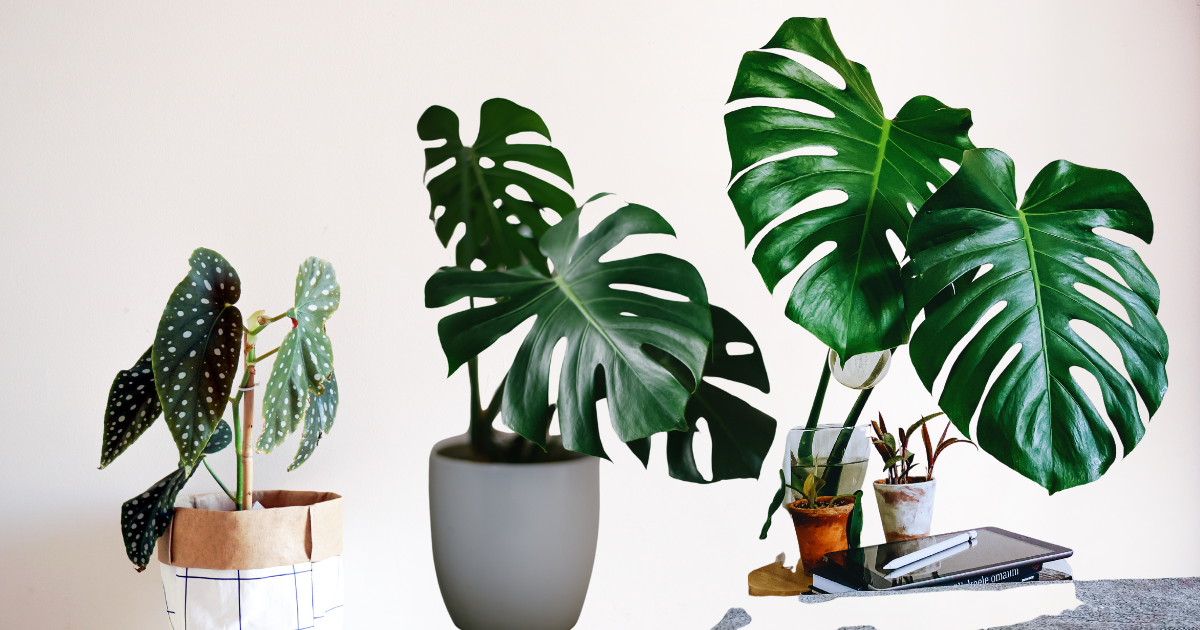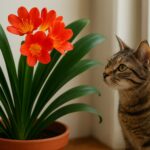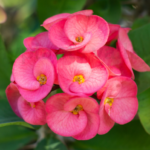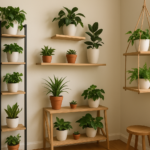Houseplants have a magical way of transforming any space, adding a touch of nature and fresh air to your home. Among the most captivating and popular houseplants is the Split-Leaf Philodendron, known for its large, lush, and uniquely lobed leaves. This tropical beauty can instantly turn your living room into a vibrant indoor jungle. But like all plants, the Split-Leaf Philodendron requires proper care to thrive and grow healthy.
Whether you’re a seasoned plant enthusiast or a beginner looking to green up your space, this guide is packed with practical tips and expert advice on nurturing a Split Leaf Philodendron. From selecting the right potting mix to understanding its light and water needs, we’ll cover everything you need to know. Let’s dive in and discover how you can create a stunning, healthy Split Leaf Philodendron that will enhance your décor and bring a slice of the tropics into your home.
What is a split-leaf philodendron?

The Split Leaf Philodendron, often known by its scientific names Monstera Deliciosa and Philodendron Bipinnatifidum, is a captivating tropical plant cherished for its dramatic and unique foliage. Its large, glossy green leaves are characterized by deep splits and perforations, giving it a distinct, almost sculptural appearance. These fenestrations make the plant visually striking and serve a functional purpose in its natural habitat, allowing light to filter through the dense canopy of the rainforest.
Native to the tropical rainforests of Central and South America, the Split Leaf Philodendron climbs trees using its aerial roots, spreading its leaves wide to capture sunlight. This climbing habit makes it a perfect candidate for indoor trellises or large pots with sturdy support.
In addition to its aesthetic appeal, the Split Leaf Philodendron is renowned for its resilience and low maintenance needs. It thrives in bright, indirect light but can tolerate lower light conditions, making it versatile for various indoor environments. The plant prefers a well-draining soil mix and moderate watering, allowing the top inch of soil to dry out between waterings.
History and Origin
Native Habitat
The Split Leaf Philodendron, primarily known as Monstera Deliciosa or Philodendron Bipinnatifidum, hails from the lush rainforests of Central and South America. Rich in biodiversity, these regions provide the perfect environment for the plant’s growth. In its native habitat, the Split Leaf Philodendron thrives under the canopy of tall trees, climbing their trunks with its aerial roots. This climbing habit allows the plant to reach for sunlight while its large, fenestrated leaves efficiently capture light and resist damage from heavy rainfall.
Introduction to Home Gardening
The journey of the Split Leaf Philodendron from the wild rainforests to our homes began in the mid-20th century. As global trade and interest in exotic plants grew, horticulturists and enthusiasts discovered the plant’s unique appeal and resilience. Its ability to adapt to indoor conditions made it an instant favorite among houseplant collectors. The Split Leaf Philodendron’s large, dramatic leaves and easy-going nature quickly earned it a place in homes and offices worldwide.
Types of Split Leaf Philodendron
The term “Split Leaf Philodendron” can refer to several distinct species, each with unique characteristics. The most common types are Monstera Deliciosa and Philodendron bipinnatifidum. Understanding the differences between these types can help you choose the best plant for your home.
Monstera Deliciosa
Monstera Deliciosa, often called the Monstera or Swiss Cheese Plant, is famous for its large, heart-shaped leaves that develop distinctive splits and holes as they mature. Native to the tropical forests of southern Mexico and Panama, this plant is a climbing vine that anchors its aerial roots to trees. The fenestrations in the leaves allow light to pass through to the lower parts of the plant and help it withstand strong winds in its natural habitat. Monstera Deliciosa produces an edible fruit that tastes like a mix of pineapple and banana, which gives it the nickname “delicious.”
Philodendron bipinnatifidum
Philodendron Bipinnatifidum, known as the Tree Philodendron or Lacy Tree Philodendron, has deeply lobed, non-perforated leaves. This plant originates from the rainforests of Brazil, Bolivia, Argentina, and Paraguay. Unlike the climbing Monstera Deliciosa, Philodendron bipinnatifidum grows as a self-supporting shrub with a thick, woody stem. Its leaves are large and glossy, with a more pronounced, lobed structure than the Monstera. This species does not produce edible fruit.
Read Also: Philodendron Melanochrysum: A Leafy Marvel
Key Differences Between the Types

- Leaf Structure:
Monstera Deliciosa: Heart-shaped leaves with splits and holes.
Philodendron Bipinnatifidum: Deeply lobed, non-perforated leaves.
- Growth Habit:
Monstera Deliciosa: Climbing vine with aerial roots.
Philodendron Bipinnatifidum: Self-supporting shrub with a thick stem.
- Native Habitat:
Monstera Deliciosa: Southern Mexico to Panama.
Philodendron Bipinnatifidum: Brazil, Bolivia, Argentina, and Paraguay.
- Edible Fruit:
Monstera Deliciosa: Produces edible fruit with a tropical flavor.
Philodendron Bipinnatifidum: Does not produce edible fruit.
Benefits of Growing Split Leaf Philodendron
The Split Leaf Philodendron is more than just a beautiful addition to your home. It offers several practical benefits, making it an excellent choice for novice and experienced plant enthusiasts. Here are the key benefits:
Aesthetic Appeal
One of the primary reasons people choose the Split-Leaf Philodendron is its striking visual appeal. The plant’s large, glossy leaves with distinctive splits and lobes create a dramatic, tropical look that can enhance any indoor space. Whether placed in a living room, office, or bedroom, the Split-Leaf Philodendron adds a touch of natural elegance and makes a bold statement. Its lush foliage can transform a plain room into a vibrant, inviting environment, making it a popular choice for interior decorators and plant lovers.
Air Purification
In addition to its beauty, the Split Leaf Philodendron is also known for its air-purifying properties. Like many houseplants, it helps remove toxins from the air, improving indoor air quality. The plant absorbs pollutants such as formaldehyde, benzene, and carbon monoxide through its leaves and roots, converting them into harmless substances. This natural air filtration process can make your living space healthier and more pleasant, especially in homes with limited ventilation.
Low Maintenance
Another significant benefit of the Split Leaf Philodendron is its low-maintenance nature. This plant is relatively easy to care for, making it ideal for busy individuals or those new to gardening. It thrives in various indoor conditions, tolerating bright, indirect, and lower light levels. The watering needs are moderate; simply water when the top inch of soil feels dry. Additionally, the plant is resilient and can recover well from occasional neglect. Its hardy nature means you don’t need to fuss over it constantly, allowing you to enjoy its beauty with minimal effort.
How to Choose the Right Split Leaf Philodendron?
Selecting the perfect split-leaf philodendron involves considering several key factors. Here’s a quick guide to help you make the best choice:
- Plant Health: Look for vibrant, unblemished leaves and a sturdy stem. Avoid plants with yellowing leaves, spots, or signs of pests.
- Size: Consider the space where you plan to place the plant. Smaller plants are easier to manage, while larger ones make a more dramatic statement.
- Type: Choose Monstera Deliciosa and Philodendron bipinnatifidum based on your aesthetic preference and the plant’s growth habit.
- Root System: Gently check the roots. Healthy roots should be firm and white or light brown. Avoid plants with mushy or overly compacted roots.
- Source: Purchase from a reputable nursery or garden center. These places are more likely to sell healthy, well-cared-for plants.
- Environmental Compatibility: Ensure the plant can thrive in your home environment. Consider factors like light availability, temperature, and humidity levels.
- Pot and Soil: Choose a plant that comes in a well-draining pot with appropriate soil. This ensures the plant has the best start in its new home.
Planting Your Split Leaf Philodendron
Best Soil Types
For optimal growth, use a well-draining potting mix. A combination of peat moss, perlite, and pine bark works well. This mix provides good aeration and drainage, preventing root rot and promoting healthy growth.
Potting Tips
- Choose a pot with drainage holes to prevent water from accumulating at the bottom.
- Place a layer of gravel or small stones at the bottom of the pot to improve drainage.
- Fill the pot with the potting mix, leaving enough space for the root ball.
- Place the plant in the pot and fill in around the roots with more potting mix.
- Water thoroughly after planting to help the soil settle around the roots.
Ideal Growing Conditions
Light Requirements
Split-leaf philodendrons thrive in bright, indirect light. They can tolerate lower light levels, but their growth may slow, and their leaves may not develop as many splits.
Temperature and Humidity Needs
- Ideal Temperature: 65-85°F (18-29°C).
- Humidity: It prefers a humidity level around 60%. You can increase humidity by misting the leaves or using a humidifier.
Watering Your Split Leaf Philodendron
How Often to Water
Water the plant when the top inch of soil feels dry. Typically, this means watering once a week during the growing season and less frequently in winter.
Signs of Overwatering and Underwatering
- Overwatering: Yellowing leaves, soggy soil, and root rot.
- Underwatering: Brown, crispy leaf edges and dry soil.
Fertilizing Your Plant
Types of Fertilizers
Use a balanced, water-soluble fertilizer with an equal ratio of nitrogen, phosphorus, and potassium (e.g., 20-20-20).
Feeding Schedule
Feed your plant every 4-6 weeks during the growing season (spring and summer). When growth slows in fall and winter, reduce feeding.
Pruning and Maintenance
How to Prune
- Use clean, sharp scissors or pruning shears.
- Remove yellow or damaged leaves to encourage new growth.
- Trim back stems to control the plant’s size and shape.
Regular Maintenance Tips
- Dust the leaves regularly with a damp cloth to clean them and allow for better photosynthesis.
- Rotate the plant periodically to ensure even growth.
Common Pests and Diseases
Identification and Treatment
- Pests: Look for spider mites, aphids, and mealybugs. Treat with insecticidal soap or neem oil.
- Diseases: Watch for leaf spot and root rot. Remove affected leaves and improve watering practices.
Preventive Measures
- Ensure good air circulation around the plant.
- Avoid overwatering and keep the leaves dry to prevent fungal infections.
Repotting Your Plant
When and How to Report
- Repot every 1-2 years or when roots grow from the drainage holes.
- Choose a pot 1-2 inches larger in diameter.
- Gently remove the plant from its old pot, loosen the root ball, and place it in the new pot with fresh soil.
Signs Your Plant Needs Repotting
- Roots are growing out of the drainage holes.
- Soil dries out quickly after watering.
- The plant appears top-heavy or crowded.
Propagation Techniques
Propagating from Cuttings
- Take a cutting with at least one node and a few leaves.
- Place the cutting in water or directly into the soil.
- Ensure the cutting has good air circulation and keep the soil or water consistently moist.
Step-by-Step Guide
- Use a clean, sharp knife or scissors to cut just below a node.
- Remove the lower leaves, leaving at least one or two at the top.
- Place the cutting in water or soil.
- Keep in a warm, bright location with indirect light.
- Wait for roots to develop before transplanting (if starting in water).
Troubleshooting Common Issues
Yellowing Leaves
- Cause: Overwatering, poor drainage, or nutrient deficiencies.
- Solution: Check soil moisture, improve drainage, and ensure proper feeding.
Leaf Drop
- Cause: Sudden changes in temperature, drafts, or overwatering.
- Solution: Stabilize the plant’s environment and adjust watering habits.
Slow Growth
- Cause: Insufficient light, low nutrients, or root-bound conditions.
- Solution: Increase light exposure, fertilize appropriately, and repot if necessary.
FAQs
How much light does a Split Leaf Philodendron need?
Split-leaf philodendrons thrive in bright, indirect light. They can tolerate lower light conditions, but their growth may slow, and the leaves may not develop as many splits and holes. Avoid placing them in direct sunlight, as this can scorch the leaves.
How often should I water my Split Leaf Philodendron?
Water your Split Leaf Philodendron when the top inch of soil feels dry. This typically means watering once a week during the growing season (spring and summer) and less frequently in the fall and winter. Ensure the pot has good drainage to prevent waterlogging.
Why are the leaves of my Split Leaf Philodendron turning yellow?
Yellowing leaves can be caused by overwatering, poor drainage, or nutrient deficiencies. Check the soil moisture, improve drainage if necessary, and ensure the plant is fed a balanced fertilizer during the growing season.
Can I propagate my Split Leaf Philodendron? If so, how?
Yes, you can propagate a Split-Leaf Philodendron. The easiest method is to take stem cuttings. Cut just below a node with a sharp, clean knife, remove the lower leaves, and place the cutting in water or directly into the soil. Keep it in a warm, bright location with indirect light and wait for roots to develop before transplanting (if started in water).
What should I do if my Split Leaf Philodendron has pests?
Common pests include spider mites, aphids, and mealybugs. Treat infestations with insecticidal soap or neem oil. Ensure good air circulation around the plant and keep the leaves clean to prevent future pest problems. Regularly inspect your plant for early signs of pests and act promptly to treat them.
Conclusion
In conclusion, cultivating a Split Leaf Philodendron can enrich your living space with its striking foliage and air-purifying qualities. Whether you’re a seasoned gardener or starting, this resilient plant offers beauty and low-maintenance care. You can ensure its vibrant health and longevity by providing the right conditions—such as adequate light, proper watering, and occasional pruning. Embrace the joy of nurturing this tropical gem, and let it bring a touch of nature’s elegance into your home, enhancing both the aesthetic appeal and air quality for years to come.







